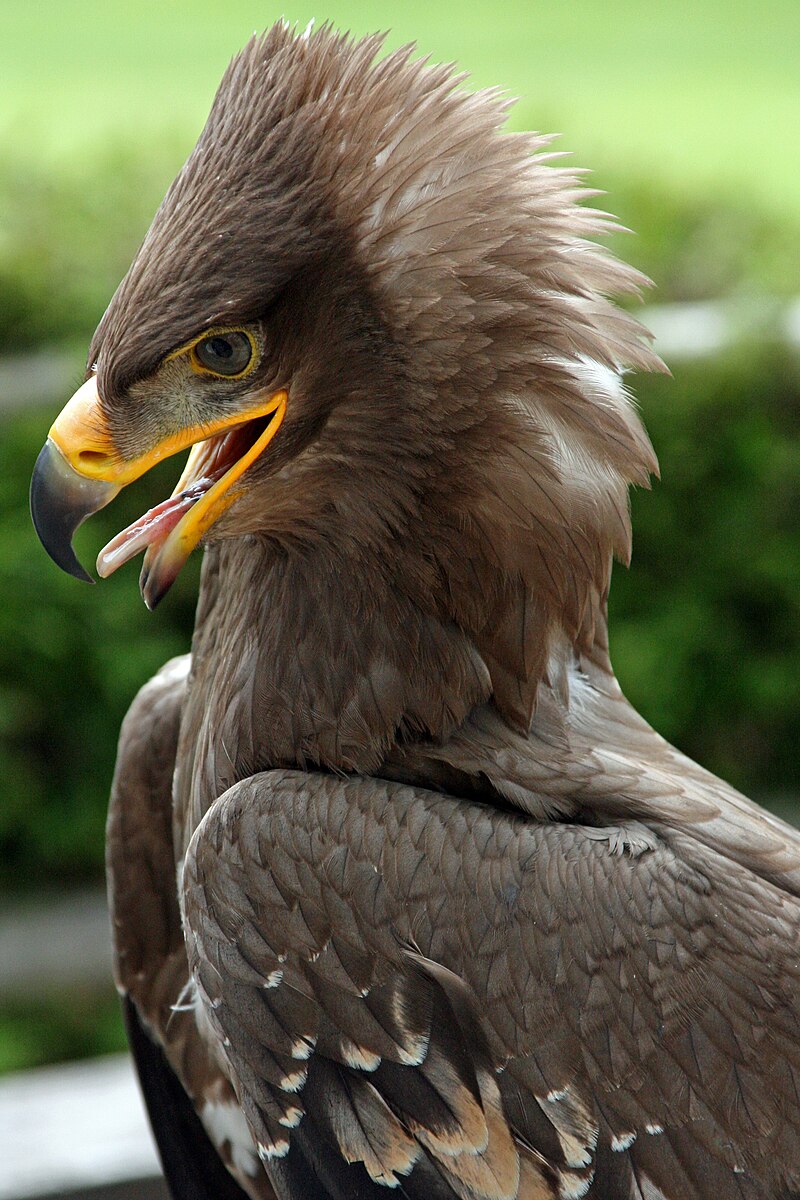Steppe eagles are impressive birds of prey, known for their hunting prowess and adaptability. However, contrary to popular belief, these majestic raptors do not dive for fish as part of their natural hunting behavior. Instead, they are primarily terrestrial predators, focusing on small mammals, birds, reptiles, insects, and carrion as their primary food sources.
Steppe Eagles: Terrestrial Hunters
Steppe eagles are well-equipped to hunt on the ground, with their sharp talons and powerful beaks. They often wait patiently near rodent burrows, ready to pounce on their prey as it emerges. These birds are also known to actively search for and pursue their targets, using their keen eyesight and agility to catch small animals.
Feeding Habits of Steppe Eagles
 Image source: Steppe Eagle by Fimb
Image source: Steppe Eagle by Fimb
The diet of steppe eagles is quite diverse, reflecting their adaptability and opportunistic nature. In addition to small mammals, such as ground squirrels, voles, and hares, these birds also prey on birds, reptiles, and even insects. They are known to scavenge on carrion as well, making them important members of their ecosystem’s food chain.
Habitat and Hunting Strategies
Steppe eagles are found in various habitats, including grasslands, steppes, and semi-deserts. Their hunting strategies are tailored to the specific environments they inhabit. For example, in areas with abundant small mammal populations, steppe eagles may focus their efforts on these prey, while in regions with fewer rodents, they may turn to other food sources, such as birds or reptiles.
Conservation Concerns
Despite their impressive hunting abilities, steppe eagle populations have faced significant declines in recent years. The primary threats to these birds include habitat loss, power line collisions, and human persecution. As a result, the steppe eagle is currently classified as an Endangered species by the International Union for Conservation of Nature (IUCN).
Importance in Ecosystems
Steppe eagles play a crucial role in their ecosystems, helping to maintain a balance between predator and prey populations. By preying on small mammals and other animals, they help to control the populations of these species, which can have a significant impact on the overall health of the ecosystem.
Adaptations for Hunting
Steppe eagles have evolved a range of physical and behavioral adaptations that make them highly effective hunters. Their sharp talons and powerful beaks allow them to capture and tear apart their prey, while their keen eyesight and excellent flying skills enable them to spot and pursue their targets from a distance.
Nesting and Breeding Behavior
Steppe eagles are known for their impressive nesting and breeding behavior. They typically build large, stick-built nests on cliffs or in tall trees, and both the male and female birds take an active role in incubating the eggs and caring for the young.
Relationship with Humans
While steppe eagles are not typically a threat to humans, they have historically faced persecution and conflict with human activities. In some regions, these birds have been targeted for their perceived threat to livestock or perceived competition for prey. However, efforts to educate the public and promote conservation have helped to improve the relationship between steppe eagles and humans in many areas.
Conclusion
In conclusion, steppe eagles are remarkable birds of prey that play a vital role in their ecosystems. While they do not dive for fish, these impressive raptors are skilled terrestrial hunters, capable of capturing a wide range of prey. However, their populations have faced significant declines, and ongoing conservation efforts are crucial to ensuring the long-term survival of these magnificent birds.
References:
- Steppe Eagle – Facts, Diet, Habitat & Pictures on Animalia.bio, https://animalia.bio/steppe-eagle?custom_list=941
- Steppe Eagle: 10 Fascinating Insights – Discover Altai, https://www.discoveraltai.com/steppe-eagle/
- Steppe Eagle | The Peregrine Fund, https://peregrinefund.org/explore-raptors-species/eagles/steppe-eagle
- Steppe Eagle (Key Facts To Know) – European Raptors, https://europeanraptors.org/steppe-eagle/.

